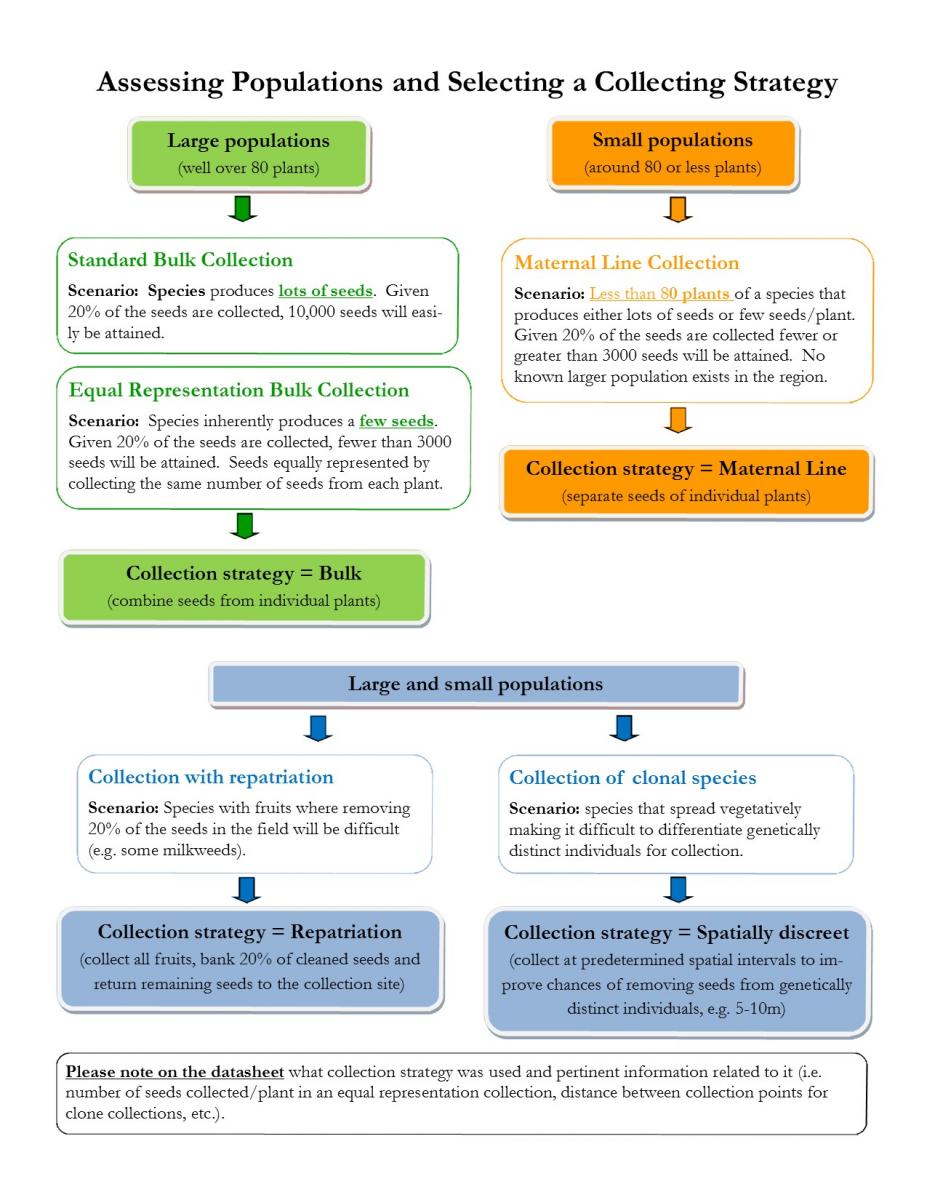Several of the species we target for our restoration collection exist in populations that do not fit the mold of our standard collection protocols: 3000-20,000 seeds harvested from at least 80 individuals, collecting no more than 20% of the seeds. Remnants of natural habitat in the Midwest are often very small and may not have 80 individuals in a population or fecundity (reproductive potential) is so low that even if eighty or more individuals occur in a population, not enough seed is produced to reach the lower limit of 3000 seeds. Because of this, many of the species on our target list are not being collected. In order to ensure that these important species are collected, we needed to alter our collecting protocols to accommodate these species. Some of these new protocols mirror those used to collect rare species that often exist in small populations where maximizing genetic diversity is critical.
• For populations near or less than 80 individuals, 20% of seeds should be collected along maternal lines (seeds from each plant sampled should be bagged separately).
• For populations with well over 80 individuals representing species that have naturally low fecundity that will not yield 3000 seeds given 20% of the seeds are collected, seeds should be collected with equal representation (same number of seeds collected from each plant sampled) in a bulk collection.
If larger populations can be found nearby for which these special collecting protocols would not apply, attempts should be made to make collections from the larger populations because these populations generally support greater genetic diversity. Processing, cleaning and curating large accessions collected along maternal lines is time consuming, so these collections should be limited only to circumstances that make them necessary. No maternal line collections should be made without prior approval from Seed Bank staff.
The chart below was created to help assist collectors in selecting a collecting strategy for different population scenarios.








